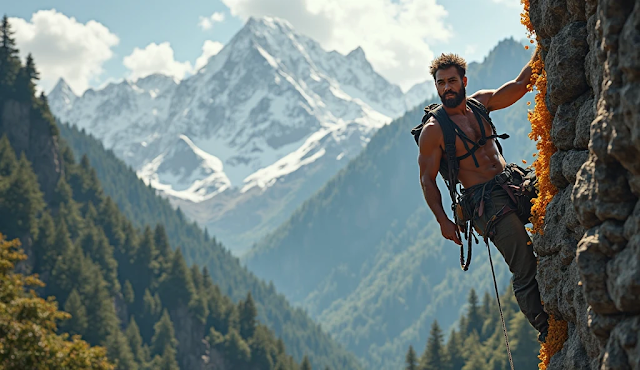The history of mountaineering traces its roots to early ascents driven not by sport, but by spiritual, scientific, or exploratory motives. Peaks were climbed to build altars, study weather, or survey landscapes. Before the 18th century, few ventured up mountains purely for achievement. By the 1700s, European scientists began exploring the Alps, particularly around Chamonix, France, drawn by Mont Blanc’s glaciers.
Mountaineering as a sport emerged in 1760 when Horace-Bénédict de Saussure, a Genevese scientist, visited Chamonix and envisioned conquering Mont Blanc (4,807 m). The peak was first summited in 1786 by Michel Gabriel Paccard, a local doctor, and his porter, Jacques Balmat. By the mid-19th century, British climbers, guided by Swiss, Italian, or French experts, scaled Switzerland’s major peaks. Swiss guides pioneered routes across Europe, cementing mountaineering as a prestigious pursuit.
After 1870, climbers sought tougher routes on conquered Alpine peaks. By the late 1800s, attention shifted to the Andes, Rockies, Caucasus, African ranges, and the Himalayas. Key milestones included:
Mount Aconcagua (6,959 m), Andes: First climbed in 1897.
Grand Teton (4,197 m), Rockies: Summited in 1898.
Mount St. Elias (5,489 m), U.S.-Canada border: Conquered in 1897 by Italian Duke Luigi Amedeo (Duke of Abruzzi).
The Himalayas entered Western awareness in the late 15th century. Colonel Kirkpatrick’s 1792 book An Account of Nepal detailed the region. In 1843, British surveyor George Everest measured peaks in Nepal, revealing the world’s tallest mountains. By 1906, 75 of Earth’s highest peaks were identified in Nepal, though political restrictions delayed exploration.
Everest attempts began in 1922. In 1924, British climbers George Mallory and Andrew Irvine vanished near the summit, sparking enduring mystery. Post-1940, British-Gurkha expeditions led by Colonel Jimmy Roberts and Lt. Col. James Owen Merion Roberts trained Sherpa teams and systematized trekking, earning them the title “Fathers of Trekking.”
The 1950s saw Himalayan breakthroughs:
Annapurna I (8,091 m): First 8,000m peak summited by a French team in June 1950.
Mount Everest (8,848 m): Conquered on May 29, 1953, by Edmund Hillary (New Zealand) and Tenzing Norgay (Nepal). This capped 30 years of attempts, including three reconnaissance missions.
The 1960s ushered in Alpine-style climbing: minimal gear, no porters or oxygen, and focus on challenging routes over sheer summits.
Chronological List of Key Events & Climbers:
1760: Horace-Bénédict de Saussure inspires Mont Blanc’s ascent.
1786: Michel Gabriel Paccard and Jacques Balmat summit Mont Blanc.
1792: Colonel Kirkpatrick publishes An Account of Nepal.
1843: George Everest measures Himalayan peaks.
1897: Italian Duke Luigi Amedeo climbs Mount St. Elias.
1897: First ascent of Mount Aconcagua.
1898: Grand Teton summited.
1922: Early Everest attempts begin.
1924: George Mallory and Andrew Irvine disappear near Everest’s summit.
1940: Colonel Jimmy Roberts and Lt. Col. James Owen Merion Roberts lead British-Gurkha expeditions.
1950: French team summits Annapurna I.
1953 (May 29): Edmund Hillary and Tenzing Norgay conquer Everest.
1960s: Alpine-style climbing revolutionizes mountaineering.






0 Comments